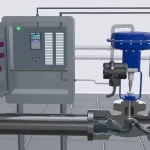Nowadays, there is a big demand for medical assistants. More than 500,000 medical assistant jobs were available in the United States in , according to the Bureau of Labor Statistics, and since the Affordable Care Act will almost certainly result in a 20 percent increase in the number of Americans receiving primary care over the following few years, it is almost certain that clinical assistants will continue to be in high demand. Over 160,000 new clinical/medical assistant jobs are expected to be created between and , according to the BLS’s projection of a robust growth rate of 31% for assistants.
In clinics, nursing homes, doctor’s offices, and other places, you can find diligent assistants. They carry out crucial duties such obtaining patient histories and vital signs, dressing wounds, taking out sutures, delivering lab samples or medications, and assisting medical professionals as needed. In a hospital or clinic, some aides may assist with patient transportation.
Learning how to be a clinical assistant is not difficult. Nearly all community colleges and trade and technical schools provide training programs. Training programs are available practically everywhere in the country, especially in smaller communities, as a result of the rising demand how long does it take to become a medical assistant?
A clinical assistant certificate can be obtained in 8–12 months, while an associate degree requires two years to complete. Biology, chemistry, anatomy, physiology, medical terminology, and a heavy emphasis on electronic health records are typically included in the curricula for training programs. Working in the modern health care sector requires you to be proficient with electronic health record systems.
Although professional certification is not required, businesses favor hiring clinical assistants who have it. You must pass a test in addition to graduating from an approved training program in order to become certified.
In Washington, clinical assistants must get one of three levels of medical assistant certifications, and clinical assistants who administer injections or take x-rays must be licensed or registered in other states.
Despite being at the lowest end of the wage spectrum for healthcare careers, clinical assistants’ salaries are rising gradually. According to figures from the federal government, medical assistants made a median wage of $29,370 in , with the top 10% earning more than $41,570. In , the typical pay for medical assistants working in Texas was $28,270, while those working in made slightly more money, $33,750. Some careers as clinical assistants also come with benefits, which may include paid time off and a portion of your health insurance.
Many people start out as assistants for a year or two before moving on to more responsible and well-paying positions in the healthcare industry. Many clinical assistants choose to return to school to pursue a career in nursing, and others go on to become registered nurses or advanced practice nurses. A clinical assistant training program is a great place to start if you want to work in the expanding healthcare sector.
Patient-Related Duties
Assistants are frequently asked to help doctors with patient care in addition to administrative duties. To take a patient’s vital signs, such as blood pressure and temperature, for instance, a medical assistant might be requested. A patient’s weight and height may also be recorded, and the assistant may be directed to inquire with the patient about any strange symptoms they may have experienced in between appointments. Medical assistants may need to take out stitches, put on bandages, change dressings, or get patients ready for surgery or diagnostic testing in some areas.
Medical assistants may be given the task of transporting patients to different departments inside the hospital or gathering patient specimens for a lab technician to examine. A medical assistant who has completed the necessary additional training may also be asked to take blood samples from patients in order to perform diagnostic procedures.
Equipment Upkeep
Medical assistants are frequently asked to clean and sanitize surgical instruments and medical equipment. They must also make sure that the workplace they use is well furnished with the necessary resources. Sutures, gauze pads, syringes, hand sanitizer, and other necessary things that are used often in most healthcare contexts may be included in supplies.
Correspondence
A medical assistant could be asked to speak with patients, insurance providers, or a different medical facility. One might be necessary to contact patients to inform them of test findings or communicate with an insurance provider about payment concerns. Under the guidance of the healthcare expert, they might also be asked to get in touch with pharmacies to arrange for medicine refills or call in new prescriptions.
The items already covered in this article will help to explain matters for individuals who have been wondering what does a medical assistant perform throughout a normal workday, even if job tasks will vary based on where the assistant is employed.













